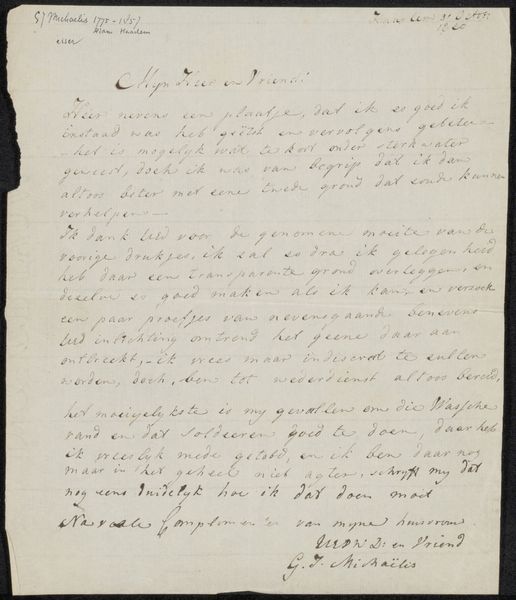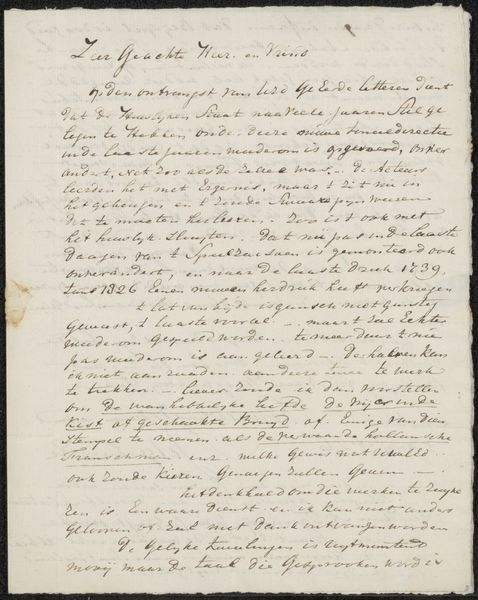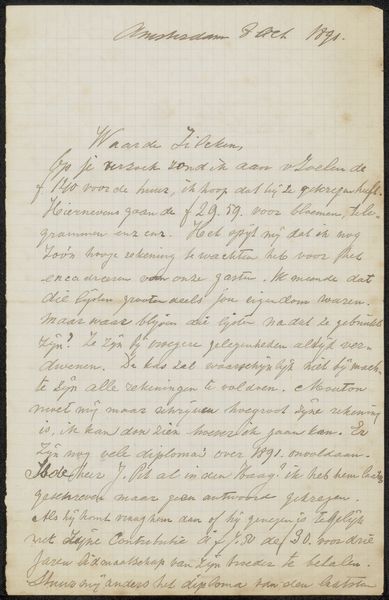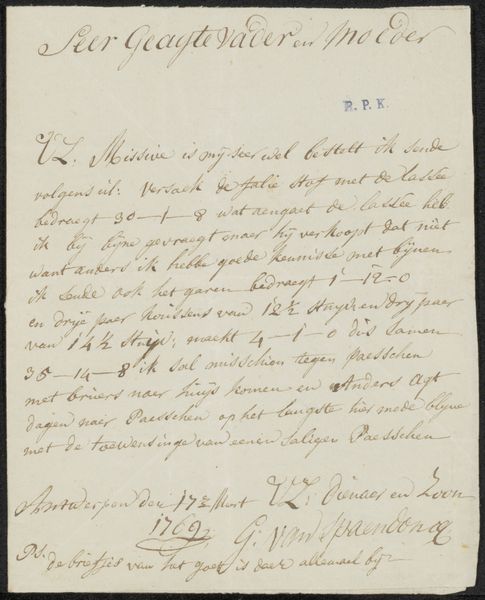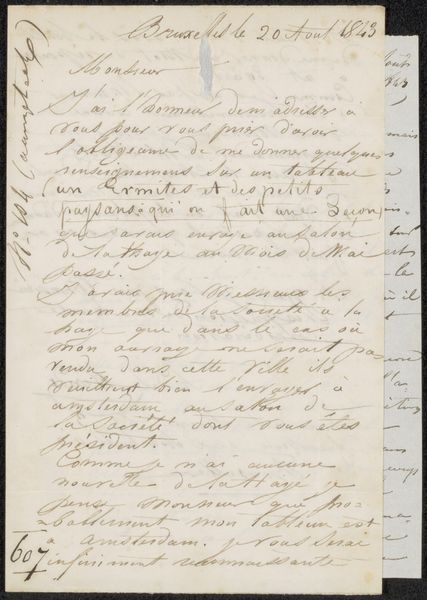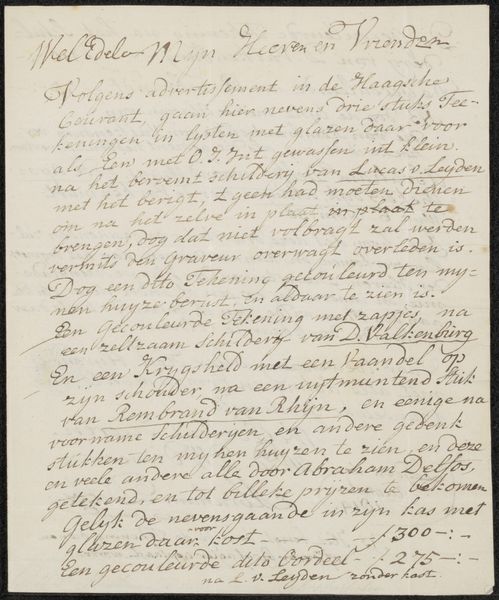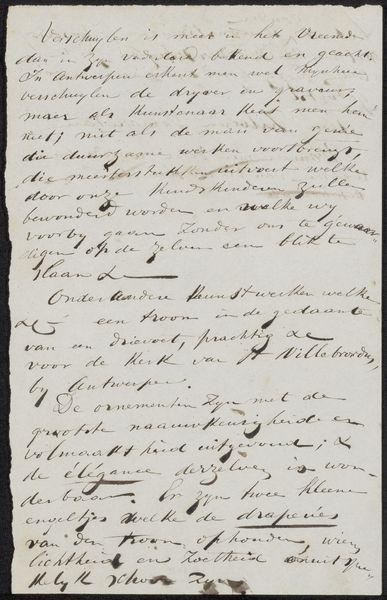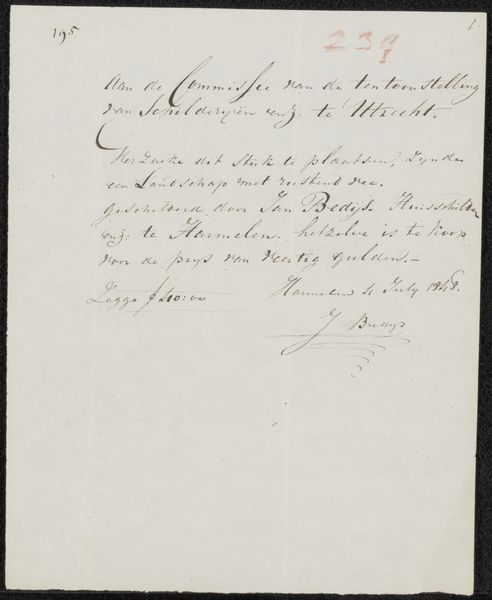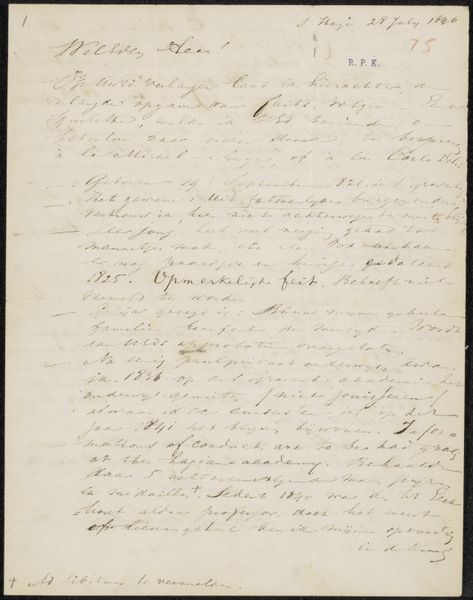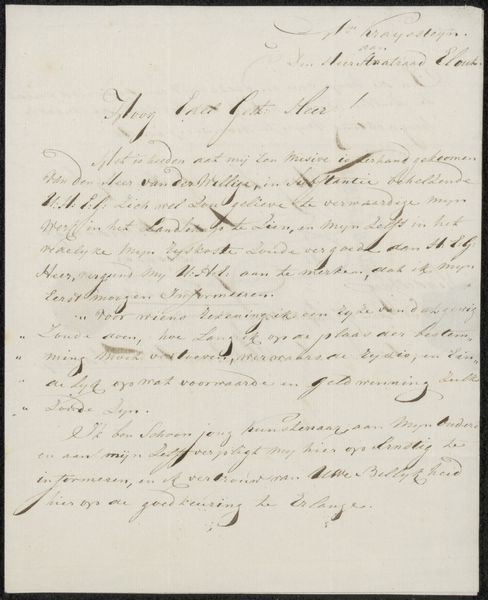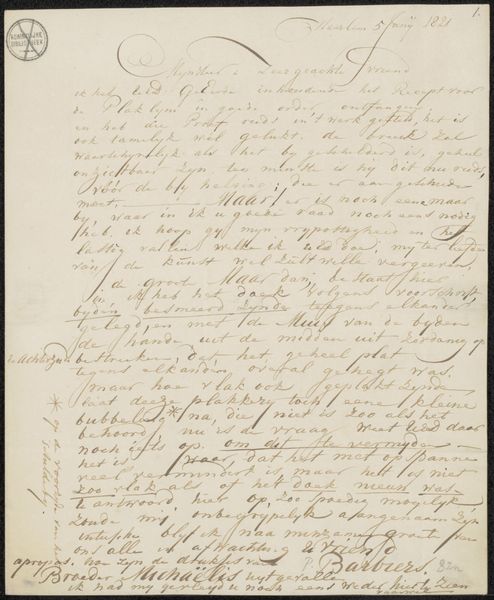
drawing, paper, ink
#
drawing
#
paper
#
ink
Copyright: Rijks Museum: Open Domain
Curator: I’d like to draw your attention to a letter by Jan Bisschop, "Brief aan Augustinus Terwesten II," likely from 1764-1765. This piece, created with ink on paper, offers us an intimate glimpse into the artist's correspondence. Editor: My first thought? Elegant, yet a bit demanding! The script swirls across the page like a well-rehearsed dance, but there’s also something rather officious about the precise formations of the lettering...as though it's acutely aware it is not handwriting as much as the making of the 'proper' marks. It's all in the serifs. Curator: Indeed. The calligraphy itself is fascinating. Note how Bisschop uses variations in line weight and the deliberate spacing to structure the text, guiding the reader’s eye. The form isn’t just about conveying information; it is contributing to its aesthetic quality. Editor: Absolutely. There's an intensity, the nib must have been so incredibly fine and precise. It whispers of intellectual urgency, don’t you think? I feel that pressure emanating from the very texture of the paper. Curator: Undoubtedly. We could surmise that this piece reflects not only the artistic practice of letter writing but also a sense of performance. He is conveying professionalism in the act of making the mark on the paper. Editor: So, less like spilling one's inner emotions on paper in the privacy of the studio, but like he’s on display? Now it really does make sense... almost a brandishing of competence. Like, "look at me!" Curator: Precisely. Perhaps Bisschop sought to impress his recipient with not only the letter’s contents but also the sheer skill displayed in its creation, even to an audience of one. Editor: It makes me wonder what mundane news became extraordinary through this artistry. I almost don't want to know. Curator: Yes. Ultimately, "Brief aan Augustinus Terwesten II" provides a unique look at Bisschop’s refined abilities with ink, highlighting an almost performative approach to letter writing. Editor: It’s an interesting balance. This intimate form becomes surprisingly presentational, prompting one to reflect on where craft becomes almost another version of posing. And to whose advantage? Intriguing.
Comments
No comments
Be the first to comment and join the conversation on the ultimate creative platform.
